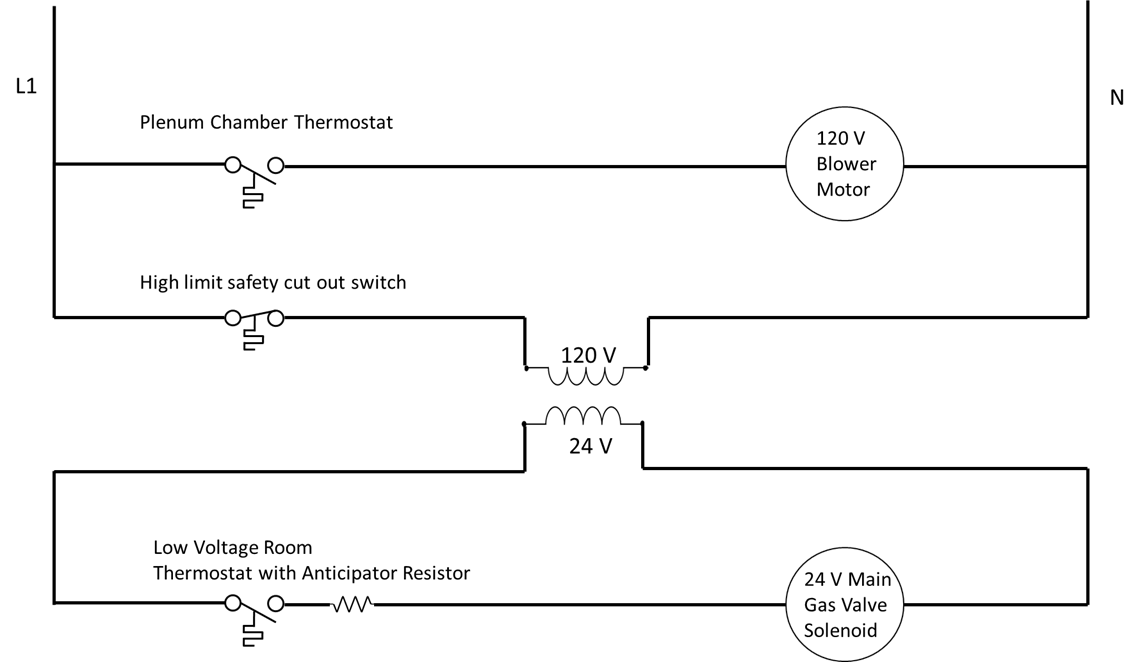Heating
17 Gas Heat – Control
Click play on the following audio player to listen along as you read this section.
The control of a central gas heating system is fairly simple. An extra-low-voltage, 120 to 24 V transformer provides the power for a control circuit, while a dedicated 120 V low-voltage circuit provides power to the blower fan. Extra-low-voltage conductors connect the furnace to the room thermostat.

When the room temperature gets sufficiently low, the room thermostat clicks shut, and the completed circuit opens the main gas valve. The inrushing gas is then ignited and begins to heat the air in the heat exchanger.
It is important that the heat exchanger isolate the products of combustion from the heated air that is to be circulated through the house. Once the temperature in the heat exchanger reaches a sufficient level, a second thermostat inside the furnace housing clicks shut and engages the blower motor.
When the heated air causes the temperature in the house to rise sufficiently, the main room thermostat contacts will open, de-energizing the main gas valve, thus cutting off the gas supply and extinguishing the burner flame.
Though the main gas valve has now been closed and the flame extinguished, the heat exchanger is still very hot, and so the blower motor continues to run, dissipating and distributing any residual heat. This will continue until the blower motor thermostat senses a sufficient drop in plenum chamber temperature, and opens its contacts.
This residual heat would normally cause overshoot of the desired room temperature, and so the low-voltage thermostat may incorporate a series connected, anticipator resistor, which creates a small amount of heat causing the thermostat to open before the set temperature is reached. A few minutes after the thermostat opens, the blower control thermostat opens, de-energizing the blower motor, and the room reaches the desired temperature.
The furnace will also contain a high temperature safety cut-out switch that will disconnect all gas to the heating elements if the temperature rises above a pre-set safety threshold. This can happen if the blower fan fails to engage and drive the heated air through the house, and thus draw cool air into the heat exchanger.
Any voltage not exceeding 30V. Equipment energized at 24 V is commonly referred to as the "low voltage circuit".
In contrast to the Power Circuit, the Control Circuit consists of inputs, in the form of switches, pushbuttons or pilot devices, which when activated, can either directly, or through a magnetic motor starter, energize a load. The Control Circuit often operates at a lower voltage than the Power Circuit for safety and ease of installation.
Any voltage between 31 and 750 V, though equipment energized at either 120V or 240V are often referred to as "line voltage" loads.
The main control device.
A component that separates the toxic products of combustion from the heated air in a gas fired furnace.
A resistor that is physically mounted inside a room thermostat, and any heat generated by it will directly affect the temperature-sensitive bi metallic strip inside the thermostat.

